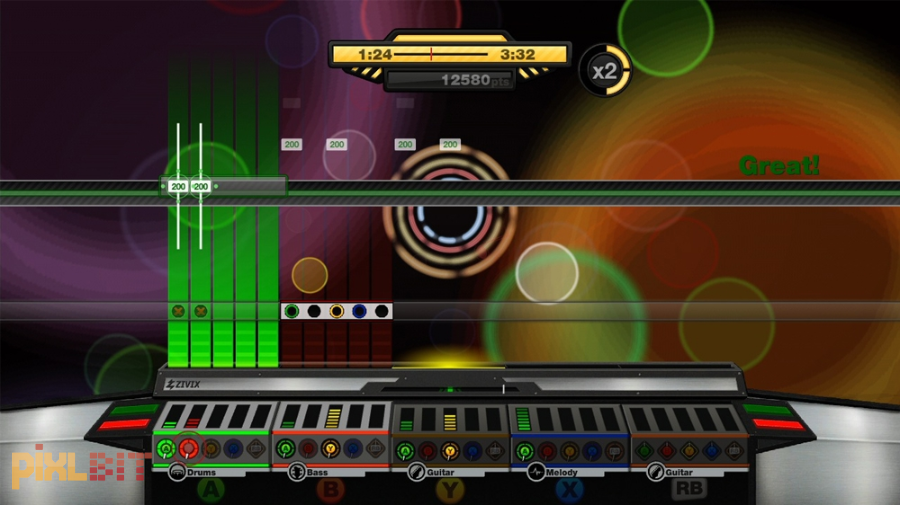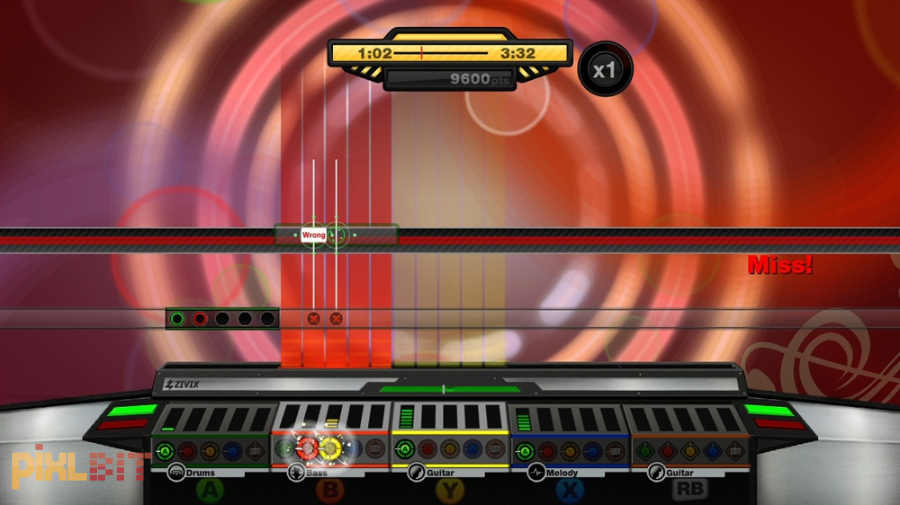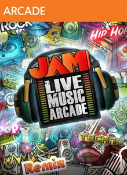JAM Live Music Arcade Review
|
|
See PixlBit's Review Policies

On 06/20/2012 at 09:26 PM by Nick DiMola An awkward interface and limited functionality hinder this otherwise creative music game. |

For those who enjoy playing with music and arrangements, but aren’t extremely serious about creation.
Playing Jam Live Music Arcade distinctly reminded me of my time with the DS title, KORG-DS 10 Plus. While the two aren’t exactly the same, Jam Live Music Arcade provides the ability to play with song arrangements using a variety of samples, encouraging players to creatively jam out. However, Jam Live Music Arcade makes the mistake of cramming in an uninspired arcade mode that needlessly mimics the popular rhythm games of this generation, like Guitar Hero and Rock Band.
In its marquee Jam Mode, Jam Live Music Arcade is all about experimentation. The 30 song track list is comprised of a wide variety of music, ranging from Techno and House music to R&B and Rock. The game breaks down each of the songs into a variety of samples, some of which loop and others that play once before requiring you to reactivate them again. Furthermore, the game groups certain samples together across each instrument (drums, guitar, bass, vocals, keys, etc) allowing you to experiment with up to 75 different samples on each song.
Given the wide array of sounds it’s easy to imagine you can really create music that, while in the vein of the original song, is extremely unique across each and every player. With unlimited time to compose, it becomes even easier to build and structure an arrangement that’s unlike anyone else’s. Furthermore, you can share these online, which provides some incentive to put effort into your creations.
What’s not so great is the interface used to manipulate the various samples in the track. Everything is controlled via any of the popular guitar peripherals available. You can activate instruments by selecting them with the different colored fret buttons and strumming up. From there, you once again use the fret buttons to choose which samples you want to activate and strum down to start them up. You can turn off samples by simply strumming down without holding any buttons while a track is selected.
Don’t get me wrong, it’s not awful by any means, and it’s likely the best you could do without any sort of pointer or touch interface, but it definitely leaves something to be desired. For example, one of the more frustrating shortcomings of the interface is the inability to momentarily pause tracks and start them back up with the exact same samples and timings you had before.
Beyond activating different samples in the standard set, you can completely switch sample sets that are drawn from different segments of the songs. Performing this switch is a bit awkward, as it requires a third usage for the fret board and forces use of the whammy bar to activate the switch (which must be done on beat with the music). What’s most frustrating is that switching sample sets also changes all of your running samples, limiting what you can do with the song.
Despite these frustrations, it’s pretty easy to get in a groove and just jam out with the music, specifically after you remember what each sample sounds like. With the one-time use samples, you can even add some flourishes at your desired timing to help make the track yours.
Unlike the inventive Jam Mode, the Arcade Mode is an absolute waste of time. The awkward interface makes it tough to play the notes on the highway, even with them moving slower than most Guitar Hero tracks, and it’s simply not very much fun to do. You don’t feel like you’re playing an instrument, which diminishes what typically makes such modes so much fun.
If you’re not specifically a serious musician and you just like to have fun with sounds and arrangements, Jam Live Music Arcade is a nice little toy that can be worth the asking price. Otherwise, there are undoubtedly better tools and programs out there to exercise your creativity.












Comments